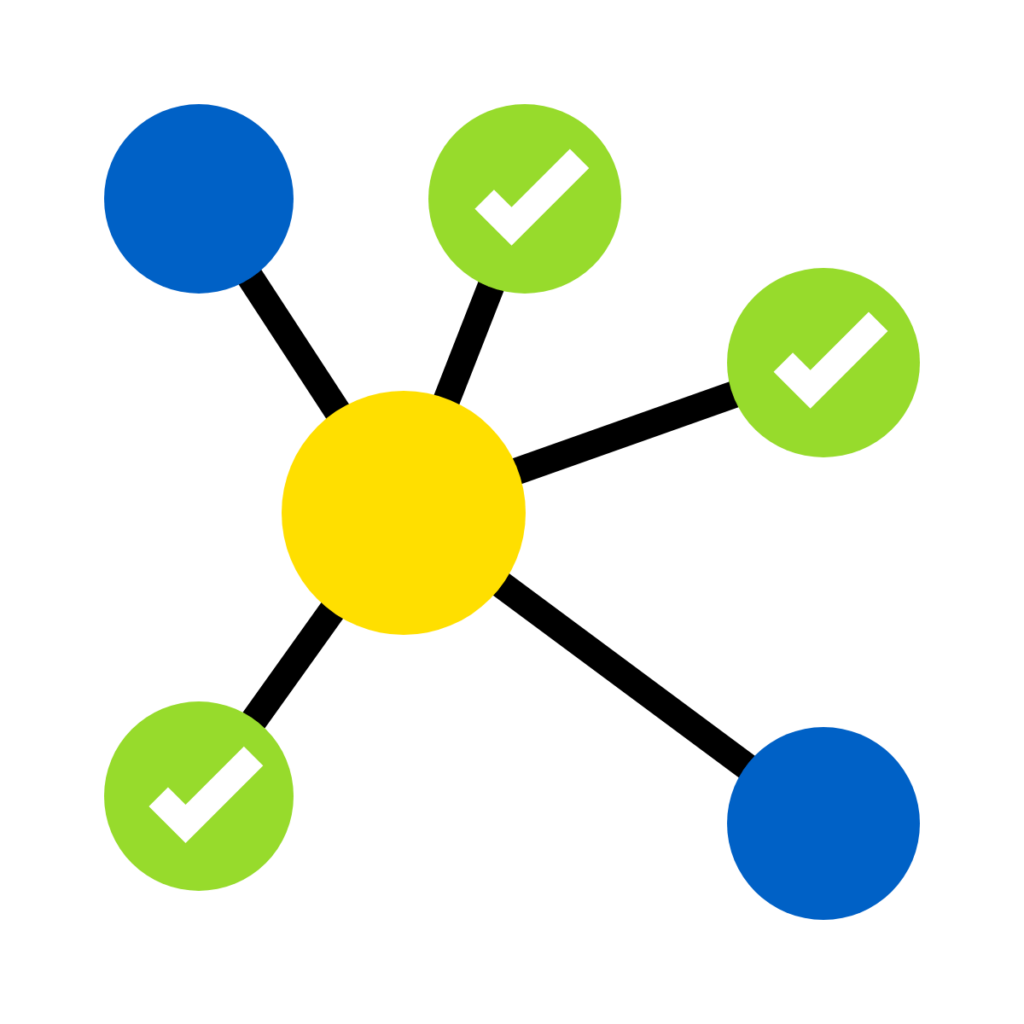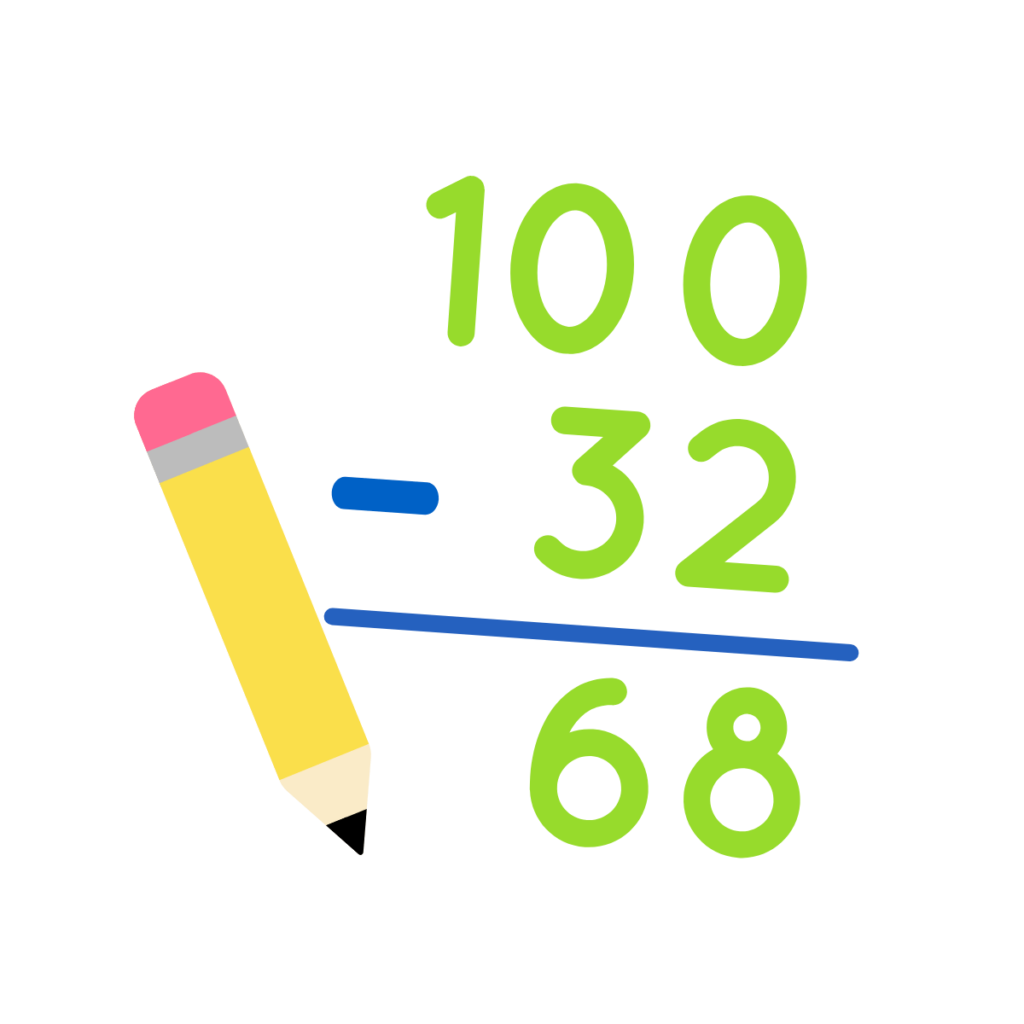
Number Sense University
The only course that teaches you the number sense strategies and provides you with all of the support and resources to build fluency in your classroom.
You are in the right place if you are...
- A teacher that wants to implement number conversations for the first time
- A teacher that does some number sense building routines but wants to add more structure, strategies and resources to their existing efforts
- A teacher that is familiar with number sense but would like a lifetime access guide to every single number sense strategy for grades K-5 along with videos, support and more than 1,000 curated prompts
- A veteran teacher that wants to add number conversations to your teaching strategies and wants something easy to follow that includes everything you will need from start to finish
- A time-strapped teacher that wants to add number sense routines to your classroom but doesn’t have the time to read multiple confusing books, attend workshops and hunt for and purchase additional resources
- A homeschool educator that wants to give your child a solid number sense foundation that leads to success in math as your child progresses

When you graduate from Number Sense University
You will:
Understand the relationship between fluency and number sense
Promote student-led learning with flexibility and creativity in your classroom
Have the confidence to teach your students to ‘think” about numbers
Be able to build your own safe, collaborative number conversations environment
Be adept at facilitating number sense building conversations in your classroom
Be able to connect and build upon student offered strategies and thoughts.
Have lifetime access to our video library of number sense strategies
Own more than 1,000 (print and digital) number sense building prompts
A supplemental pack of resources aligned to each number sense strategy (1,100+ pages)
Conceptual understanding = procedural fluency
Start solving your fact fluency equation today.
Meet Your Instructor
Hi, I’m Tanya!
I am a big believer in the power of number sense to transform your math students into problem solvers with the ability to mentally manipulate numbers. I hope you will allow me to be your coach on the journey to building number sense in your classrooms! You will have me to show you exactly how to present every number sense strategy to your students, share countless resources with you and of course cheer you on all the way to graduation!
Let me show you how to build fact fluency using number relationships and reasoning without any drill and kill.

One Payment
of $99
- 10 modules
- 35 instructional videos
- 8 hour PD certificate
- Custom course workbook
- 350+ Number Strings
- 400+ Symbol Solutions
- 200+ Array Talks Cards
- 300+ Quick Images
- 100+ Digital Fluency Pixels
- 180+ Secret Partners Prompts

Your NSU Syllabus
(Exactly What You Get)
a $350 Value
MODULE 1: Number Sense: Connecting the Dots
In this module we will examine exactly what number sense and fluency are and the characteristics that students with strong number sense exhibit. We spoke with educators like you from across the U.S. about these ideas and we’ll share those responses with you. It is clear opinions vary drastically concerning these important topics. Get excited about all of the great problem solving abilities you will be bringing to your classroom as we share the attributes that students with very strong number sense possess. And finally we will examine ways you can start bringing the magic of number sense to your campus!

Highlights of Module 1
- What exactly is Number Sense?
- Characteristics of students with strong Number Sense
- Spontaneity versus memorization
- 3 Components of Fluency
- Promoting Number Sense in the classroom
MODULE 2: All things Number Conversations
Some teachers call them number talks, others math talks and others number conversations. The name you use isn’t important, but the way you construct and facilitate them is vital to growing number sense strategies in your classroom. Push the algorithms and predetermined strategies aside, we’re going to show you how to generate student led math talk with mental manipulation of numbers. Your students will gain confidence as they become an integral part of the learning process. No more “I’m just not good at math,” number conversations will help us dispel these silly beliefs. Through interaction and sharing, your students will become part of the solution.

Highlights of Module 2
- The 7 benefits of number conversations
- Finding the “why” in math
- How to structure a number conversation
- Bonus number talks classroom posters
MODULE 3: Number Sense Strategies for K-2 Cardinality
In module 3 we dive into where everything starts in K-2 and that is with counting. Our progression leads us to cardinality and subitizing. It’s all about hands-on activities for laying these key number sense foundation blocks. And we will look at all of the best manipulatives and lessons for developing early number sense. We will discuss the use of quick images in subitizing as well as activities using manipulatives like five and ten frames, Rekenreks and more. This module includes a 160+ page Supplemental Materials pack full of prompts and resources that support early number sense strategies.

Highlights of Module 3
- Early number sense goals
- 5 benefits of subitizing
- Dot images/quick images for subitizing
- 5 skills to tackle with ten frames and Rekenreks
- Teacher’s guide to Rekenreks
- Supplemental materials pack with 160+ pages of prompts/number sense building activities
MODULE 4: Addition Strategies for K-2
In module 4 we will apply our counting strategies and foundational skills to addition operations. We extend from cardinality to our first strategy counting on. Once again, lots of visual exercises and manipulatives will help our students make the proper connections. counting on is a fairly basic strategy, but it is very important for young math learners as it shows teachers exactly where students stand with their foundational skills to this point and sets the table for more efficient addition strategies for larger quantities. From counting on, we will move into the doubles/near doubles, making tens, friendly numbers and the place value/break apart strategies. This module contains a supplemental materials pack with 160+ pages of prompts and activities for the addition strategies.

Highlights of Module 4
- Introducing and teaching the counting on, doubles/near doubles, friendly numbers, making tens and place value/break apart addition strategies
- Supplemental materials pack with 200+ pages of prompts/number sense building activities for addition.
MODULE 5: Subtraction Strategies for K-2
We move on to subtraction strategies for K-2 in module 5. Just like we did with addition, we start with the most basic strategy students will pick up first in counting back. From here, we will move into the adding up strategy which is really the partner of the counting back strategy and we see students truly recognize subtraction as the inverse of addition at this point. This lesson includes a 80+ page supplemental materials pack with a variety of approaches and prompts to reinforce these strategies.

Highlights of Module 5
- Subtraction strategies including counting back and adding up
- 80+ page supplemental material pack
MODULE 6: Grades 3-5 Strategies for Counting
This is the first of the upper elementary modules; strategies for counting. Often we focus less on subitizing in upper elementary than we did in the primary grades. Practicing perceptual subitizing is still very important in upper elementary and we will extend subitizing even more with conceptual subitizing lessons. Lessons in this module will help to transition students from additive thinking to multiplicative thinking. There are more than 500 prompts within the two bonus resources in this lesson along with more than 160 pages of supplemental materials.

Highlights of Module 6
- Perceptual versus conceptual subitizing
- Use Dot Talks for place value and algebraic thinking for upper elementary addition and subtraction foundation building.
- The benefits of and lessons using ten frames and Rekenreks
- Lessons to foster multiplicative thinking
- Bonus resource Quick Images
- Bonus Resource Dot Talks
- 120+page supplemental material pack
MODULE 7: Addition Strategies for Grades 3-5
Module 7 will show you how to navigate the best mental math strategies for grades 3-5 addition. Our extensive practice with subitizing and ten frames lays a great foundation for the first strategy; using place value to break apart numbers. The break apart strategy is a strong number sense building strategy because it requires students to think abstractly about numbers. We will also cover the friendly numbers, doubles/near doubles and making tens strategies in this module.

Highlights of Module 7
- You will learn the break apart/place value , friendly numbers , doubles/near doubles and making tens strategies for grades 3-5 addition.
- 40+ page supplemental materials pack for each strategy—more than 160 pages of prompts and activities in this module!
MODULE 8: Subtraction Strategies for Grades 3-5
In module 8, we will teach you the number sense subtraction strategies for grades 3-5. We start off with the most basic strategy—adding up. We will use plenty of number line activities to reinforce this foundational subtraction strategy as well as “jumps” to students “benchmark” or “friendly numbers.” The next strategy we will look at is the place value/break apart strategy. This strategy is great because it really shows off students’ understanding of number composition and provides an efficient solving strategy for problems with larger numbers. And lastly, we will teach you the compensation/constant difference strategy. This is a very personal strategy as students will have comfort with adjusting towards different benchmark numbers.

Highlights of Module 8
- Learn the adding up, break apart using place value and compensation/constant difference subtraction strategies for grades 3-5
- Lead students to become more efficient within their subtraction strategies
- Learn a great strategy for adjusting fraction and decimal problems to make them easier to solve
- 160+ pages of supplemental material packs for this module.
MODULE 9: Multiplication Strategies for Grades 3-5
We will walk through the best number sense strategies for multiplication in this module. Our first strategy, repeated addition, is the most basic strategy for multiplication but it helps transition students from “additive” thinking into “multiplicative” thinking. From here, we will move into the partial products strategy. The partial products strategy will use place value concepts instead of algorithms to solve multiplication problems. In the friendly numbers/compensation strategy, we will show how to first adjust and later split a factor in a multiplication problem to make friendly numbers that are easy to work with. Finally we will demonstrate a strategy for multiplication called doubling/halving. This is another strategy that can be used to solve specific problem types.

Highlights of Module 9
- We will teach you the repeated addition/skip counting, partial products, friendly numbers and doubling/halving strategies
- Subitizing leading to spatial structuring
- 160+ pages of supplemental materials for four multiplication strategies
- 160 cards for arrays talks
MODULE 10: Division Strategies for Grades 3-5
In our last module, we will break down the number sense division strategies for grades 3-5. The first strategy we will look at is really division in its most basic form; and that is repeated subtraction. Our next strategy using partial quotients moves much farther away from the standard algorithm for division. This strategy pairs well with area models which are included in your supplemental materials pack. Our final division strategy is for dividing multiples of 10, 100 and 1000. This is an easy strategy for problems with a dividend and divisor that share a common factor. We will use our number sense and place value knowledge to make problems with large numbers easier to solve mentally.

Highlights of Module 10
- 160+ page supplemental materials pack of number sense building division strategies
- Learn the repeated subtraction, partial quotients and dividing with multiples of 10, 100 and 1000.

Plus These Number Sense BONUSES!
a $210 Value
BONUS #1
Fluency Pixel Resources ($110 value)
These digital pixel art resources are perfect for building number sense outside of your number conversations time slot. You can use them for math centers, fast finishers, independent practice and more. Your students will have so much fun watching the “secret” image appear that they won’t even notice they are practicing math skills. Each fluency builder bundle includes 36 different pixels with unique problems arranged by skill parameters. 108 Pixels in All! (grades 3-5)
BONUS #2
Secret Partners Prompts ($20 value)
180 prompts, 60 for each grade. Students will build their number sense and establish friendly numbers for future operations as they navigate these prompts to find the “secret partner’ to complete each problem. (grades K-2)
BONUS #3
Symbol Solutions ($50 value)
Students develop their sense of number as engaging artistic symbols replace parts of equations. Students love this break from traditional problems and you can use these sets in many different ways. Low prep—just print and go—answer keys included. 400+ problems are arranged in sets by operations with number caps so you can select the problems that fit your students needs and even provide differentiation! (grades K-5)
BONUS #4
Number Strings ($30 value)
350+ number strings: Another great number sense building approach is number strings. Number strings are a carefully crafted set of problems that are related to one another to help students make connections between numbers and strategies. Your custom number strings are arranged by strategies and advance in difficulty so you can select strings that match the level of your students and the particular number sense strategy that you want to establish or reinforce. (K-5)

That’s a Total Value of $560
...and if it makes perfect number sense, you can enroll today for a one-time payment of only $99

One Payment
of $99
- 10 modules
- 35 instructional videos
- 8 hour PD certificate
- Custom course workbook
- 350+ Number Strings
- 400+ Symbol Solutions
- 200+ Array Talks Cards
- 300+ Quick Images
- 100+ Digital Fluency Pixels
- 180+ Secret Partners Prompts
Why is Number Sense so Important?
NSU will help you move your students from here to here (weak to strong)
Will focus on procedures and algorithms to feel confident in solving problems, resulting in inefficient strategies and the inability to make connections that could help them find a solution more quickly
Will have the ability to manipulate numbers to make problems easier to solve which will give them the confidence to be flexible in their problem solving efforts.
Will prefer to work on less challenging problems using pencil and paper rather than solving them mentally.
Find connections between numbers and patterns within problems. They understand there are multiple ways to solve problems and they will be flexible when tackling new challenges
Generally do not like doing math, often label themselves as “just bad at math” and are not motivated to explore numbers. As math is cumulative, it becomes more difficult for them to figure out new math concepts and they have to rely on rote memorization of algorithms and the application of procedures with little understanding of the underlying number concepts.
They enjoy math, exploring numeric relationships, sharing math thoughts and exploring numbers. They will often find multiple ways to solve problems and use them to check their answers.
Without number sense, we cannot have true fact fluency.
And Number Sense University is here to help!

Frequently Asked Questions
Having number talks/conversations in your classroom is a great start. Number Sense University gives you much more than just number conversations. NSU shows you exactly how to get the most out of your number talks, how to provide number sense opportunities outside of your number talks routine, teaches you all of the number sense strategies for every operation so you so can help facilitate better number conversations, provides you with more than 1000 pages of supplemental materials and resources, provides you with an additional 1000+ prompts in your bonus number sense resources and provides you with the support and collaboration of the Tanya Yero Teaching Team and other NSU students and alums.
Time is the number one challenge all teachers face when it comes to math instruction. And by adding a 10 minute daily number sense building routine you can foster student led learning. We are adjusting the way we expose students to math and changing the way they see math to create problem solvers.
Number Sense University is a self-paced online course. Once you complete your course purchase, you will have instant lifetime access. You can refer back to the modules whenever you need to.
Class participants will receive an 8-hour professional development certificate. Because every school is different, you’ll need to check with your administrator to make sure the certificate will be accepted.
This is a fully digital, online course. There are 10 implementation modules and 35 instructional videos. This format allows you to work at your own pace. Watch the videos on your laptop, iPhone or iPad.
The Number Sense University Money Back Guarantee
This course was created to teach educators the concept of, principles and process for setting up number conversations in the classroom to promote number sense. This course includes instruction for 29 different number sense strategies arranged by grade groupings and operations. It also includes more than 1100 pages of supplemental materials packs which include activities and prompts tailored to each of the strategies in this course. As such, the value of this course is by the training lessons and also the vast amount of downloadable prompts and tools. If you do change your mind about the course, we will be sad to see you leave us. We have a 2-day return policy from the start of the course. If you need to cancel your enrollment contact us at tanyayeroteaching@gmail.com.